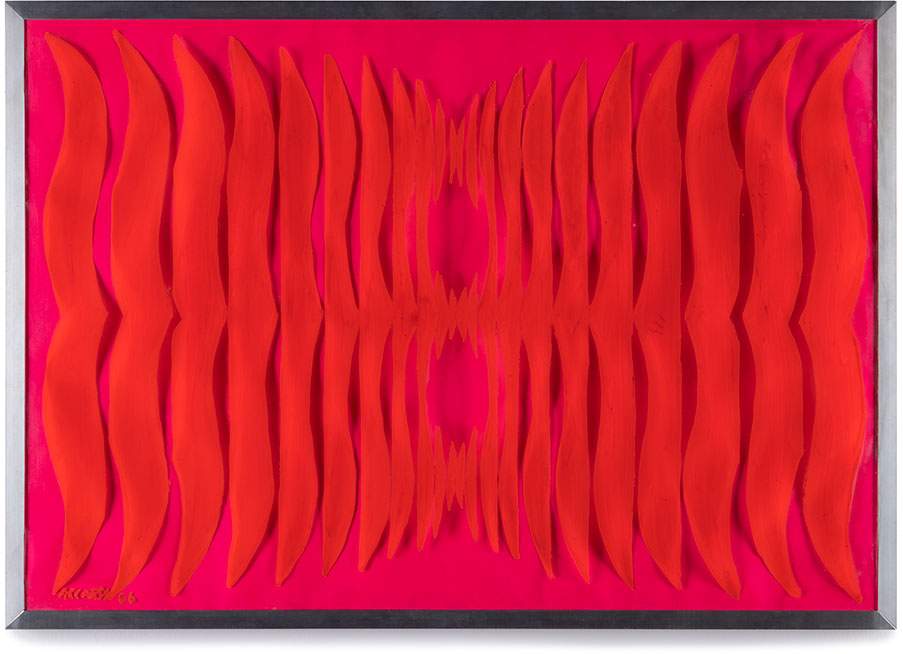A $10 million fund to acquire works by women only: this is the donation earmarked for the National Gallery of Art in Washington by the family of philanthropist Victoria P. Sant, former president of the National Gallery, who passed away in 2018. The Victoria P. Sant Fund for Women Artists, that is the name of the donation, will further the National Gallery’s priority of acquiring more works by women, from historical works to living artists. Many of the museum’s acquisitions in recent years have focused on women: these include a portrait by the Bolognese painter Lavinia Fontana (1552-1614), the first painting by an early modern Italian artist to enter the collection, and a small sculpture by Luisa Roldán (1652-1706) that is the first work by a sculptor created before 1850 to enter the collection.
“The National Gallery of Art and our millions of visitors have benefited enormously from Vicki’s dedication to serving the American public,” said Kaywin Feldman, director of the National Gallery. “It is exciting to now have an endowment fund to help us acquire masterpieces by women artists, and one that will bear the name of such an exemplary supporter and leader. We look forward to adding important works by women artists of all eras to the collection and continuing the work that Vicki so passionately supported.”
The Victoria P. Sant Fund for Women Artists will be, the museum says, “the cornerstone in ongoing efforts to close the gap of women artists represented in the collection.” Victoria P. Sant (1939-2018) was the first woman president of the National Gallery, and served as a member of the museum’s board for 15 years. The National Gallery plans to use the fund named after her to expand acquisitions of works by women as part of its efforts to increase its holdings of works by these artists: in the past two years (May 2020 to May 2022), 50.6 percent of the works acquired through purchase were by artists of color, up from 12.6 percent in the previous two years (a 302 percent increase). In the same period, works by women artists accounted for 35.5 percent of the total, compared to 20.3 percent in the previous two years (an increase of 75 percent).
Recently acquired female works include Lavinia Fontana’s Portrait of Lucia Bon asoni Garzoni (c. 1590), which depicts 16th-century musician Lucia Bonasoni Garzoni, and is considered among Fontana’s best-preserved and most accomplished surviving works in the genre of portraiture. A rare depiction of a 16th-century female musician by a 16th-century female artist, this painting tells “the story of two accomplished women who were able to overcome obstacles in a patriarchal society to succeed in the artistic spheres of painting and music,” the museum says. And again, Luisa Roldán’s Madonna and Child (c. 1680-1686), a small carved and painted wooden statue that is the first work by a sculptor executed before 1850 to enter the National Gallery’s collection. Widely accepted as a work by Roldán on stylistic grounds, it shares close similarities with a range of sculptures that are widely recognized as hers. Still, among the salient acquisitions is The American People Series #18: The Flag is Bleeding (1967) by Faith Ringgold (1930), the first painting by a leading figure in contemporary art to enter the collections of the U.S. capital’s museum. Next came works by Carmen Herrera (1915-2022), a leading abstractionist in the second half of the 20th century, Genesis Tramaine (1983), an artist who blends a provocative use of color with an urban-inspired mixed-media approach that focuses on the shape and definition of the “American Black Face” and uses exaggerated features to capture the vivid emotions of the untapped and underrepresented souls of black people. A work by Carla Accardi (1924-2014), a leading figure in postwar Italian art and the Italian feminist movement, also entered the collection: it is Rossorosa (1966), a work that exemplifies Accardi’s preference for combinations of maximally intense hues and bold patterns to create powerful optical effects.
As for sculpture, works were acquired by Sonia Gomes (1948), a contemporary Afro-Brazilian artist known for her mixed media works made with fabric, wire and other materials; Chakaia Booker (1953); Betye Saar (1926); and Louise Nevelson (1899-1988): of the latter, the National Gallery acquired Untitled (c. 1975), which is reminiscent of typical works by the Ukrainian-born sculptor and consists largely of found pieces of black-painted wood that fit neatly inside box-shaped containers. Important acquisitions were also made in the area of prints (particularly the 18th-century works of Maria Catharina Prestel, among the first women to devote themselves to the aquatint technique) and drawings, and photography (with works by Carrie Mae Weems, Christina Fernandez and JoAnn Verburg).
Image: Carla Accardi, Rossorosa (1966; paint on sicofoil on cardboard, 50.16 x 69.85 cm; Washington, National Gallery)
 |
| At the National Gallery in Washington, D.C., a $10 million fund to purchase works by women only |
Warning: the translation into English of the original Italian article was created using automatic tools. We undertake to review all articles, but we do not guarantee the total absence of inaccuracies in the translation due to the program. You can find the original by clicking on the ITA button. If you find any mistake,please contact us.